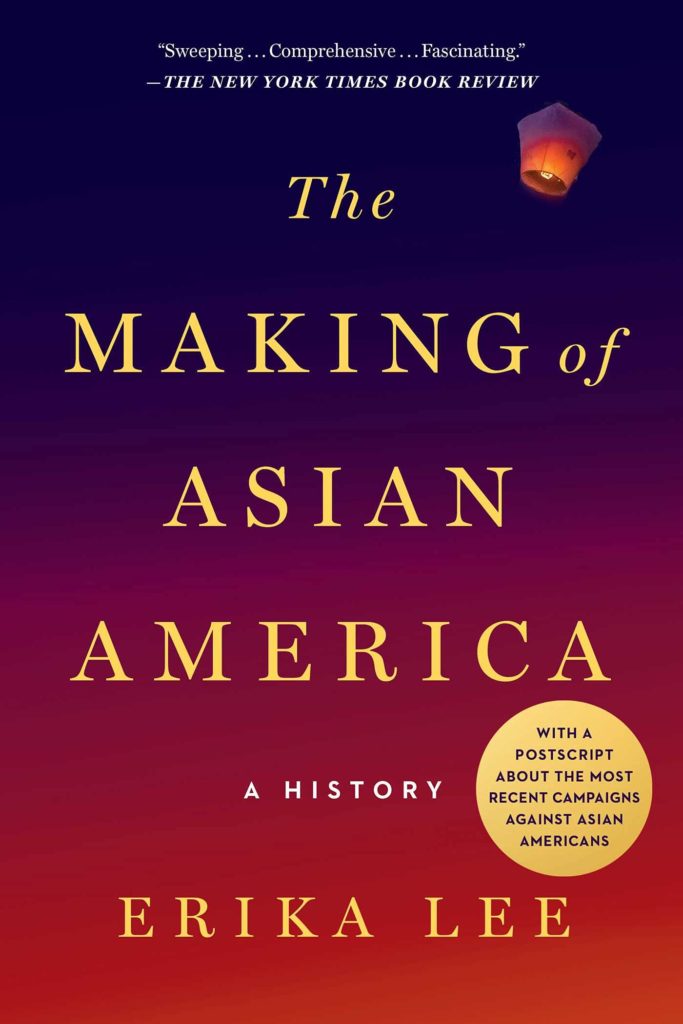The Non-fiction Feature
This week’s compelling non-fiction book
Also in this Weekly Bulletin:
The Memoir & Poetry Spot: Minor Feelings by Cathy Park Hong
The Product Spot: Mooncakes
The Pithy Take & Who Benefits
Asian Americans, who have been in the Americas for over 400 years, are the fastest growing group in the US. Erika Lee, a history professor at the University of Minnesota, starts at the beginning and explains—in broad waves and extensive detail—how Asians first came to the Americas and how their lives transformed over the centuries.
Weaving through exclusionary laws, sugarcane fields, wars, railroads, mass incarceration, and hatred, Lee illuminates how Asian Americans have persisted with proud communities. This book is for people who seek to understand: (1) the beginnings of Asian American immigration to the Americas; (2) the complex and frightening racial relations Asians encountered in the US, Canada, and Mexico; and (3) the elaborate implications of the “model minority” stereotype.
The Outline
Asians in Early America
- Late 1500s: 40,000 – 100,000 sailors from China, Japan, the Philippines, and Southeast Asia arrived in the Americas as part of Spain’s empire, which reached from the Philippines to New Spain (present-day Mexico).
- 1760s: Britain transported goods from India and China to the rest of the world. The American colonies became increasingly connected to Asia.
- 1780s: The US sent many trading ships to China.
- Many Filipinos served on these ships; as such, Filipinos ended up in many of the Pacific islands and Alaska.
Coolies
- 1838 – 1917: Over 200,000 Chinese men went to Cuba and Peru as “coolies” (indentured laborers under contract), and more than 419,000 South Asians went to British plantations in British Guiana, Trinidad, and Jamaica as coolies.
- The stereotype of Asians as coolies—cheap workers who drive down wages and steal jobs —resulted in widespread discrimination.
- Indentured laborers struggled to survive as they were transported halfway across the world to a hostile land, to perform backbreaking work among strangers who spoke different languages, ate strange food, and practiced different customs.
- 1870s: Countries condemned the coolie trade and signed treaties ending the practice.
Chinese Immigrants
- 1834: The first Chinese woman to arrive in the US was Afong Moy, whose feet were bound (wrapped so tightly the bones were crushed). People bought tickets to see the “exotic curiosity.”
- 1849: 325 Chinese men made their way to California.
- 1860s: 12,000 Chinese men, representing 90% of the workforce, built the Central Pacific Railroad, and at least 1,200 of them died doing so.
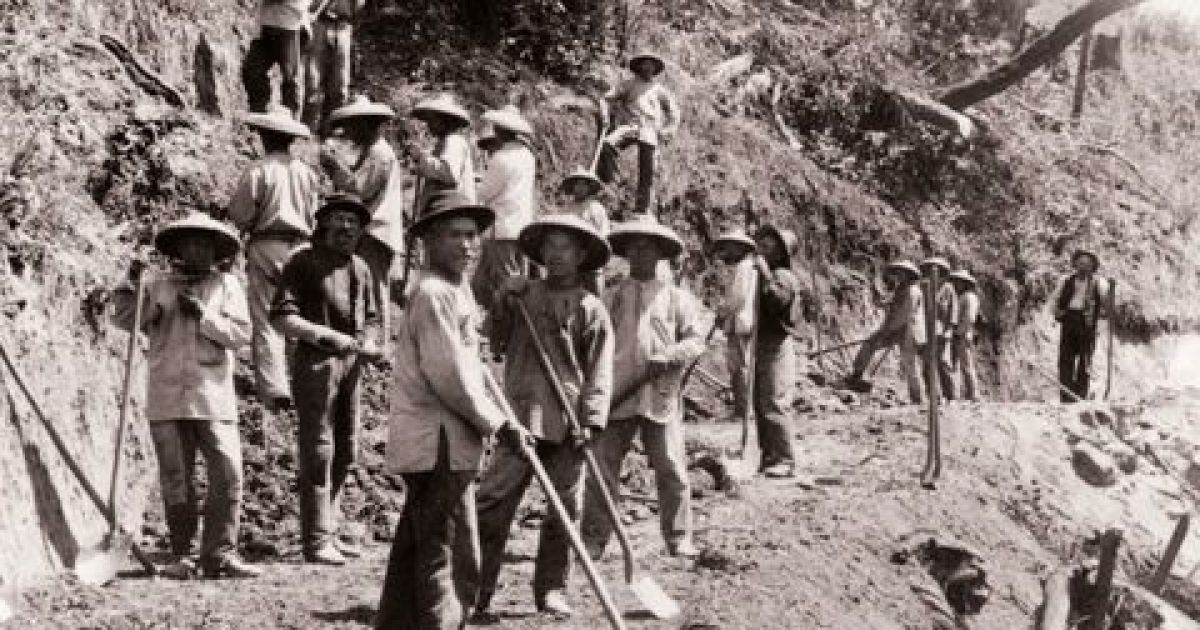
Image of Chinese railway workers from www.kuer.org
- 1870s: 138,941 Chinese immigrants entered the US, which was only 4.3% of the total number of immigrants in that decade.
- Ah Bing, a Chinese immigrant horticulturist, bred the famous Bing cherry.
- 1871: In response to a Chinese suspect shooting a policeman, a mob of nearly 500 dragged Chinese people out of their homes. The mob lynched 17 Chinese people while police stood by in the largest mass lynching in US history.
- 1882: The US passed the Chinese Exclusion Act, the country’s first immigration law that targeted an immigrant group for exclusion based on race.
- 1898: In US v. Wong Kim Ark, the US Supreme Court held that all persons born in the US were, regardless of race, native-born citizens and entitled to the rights of citizenship.
- Early 1900s: Many Chinese supported themselves by running small businesses, especially laundries, restaurants, and stores.
- Excluded from other jobs because of discrimination, they were often forced into self-employment, ethnic economies, and work that no one else wanted.
Japanese Immigrants
- 1885: From 1885 – 1924, 200,000 Japanese went to Hawaii and 180,000 more went to the continental US.
- Japanese laborers faced endless work. They woke up early, were beaten, and faced the physically devastating work of harvesting sugarcane.
- 1895: German Kaiser Wilhelm II had a nightmare of foreign invaders from the East. He ordered a painting of his dream, The Yellow Peril, which represented European fears of an Oriental invasion, and became one of the most influential illustrations of its time.
- European nations prepare for battle as a “heathen” Buddha rides a Chinese dragon towards them.
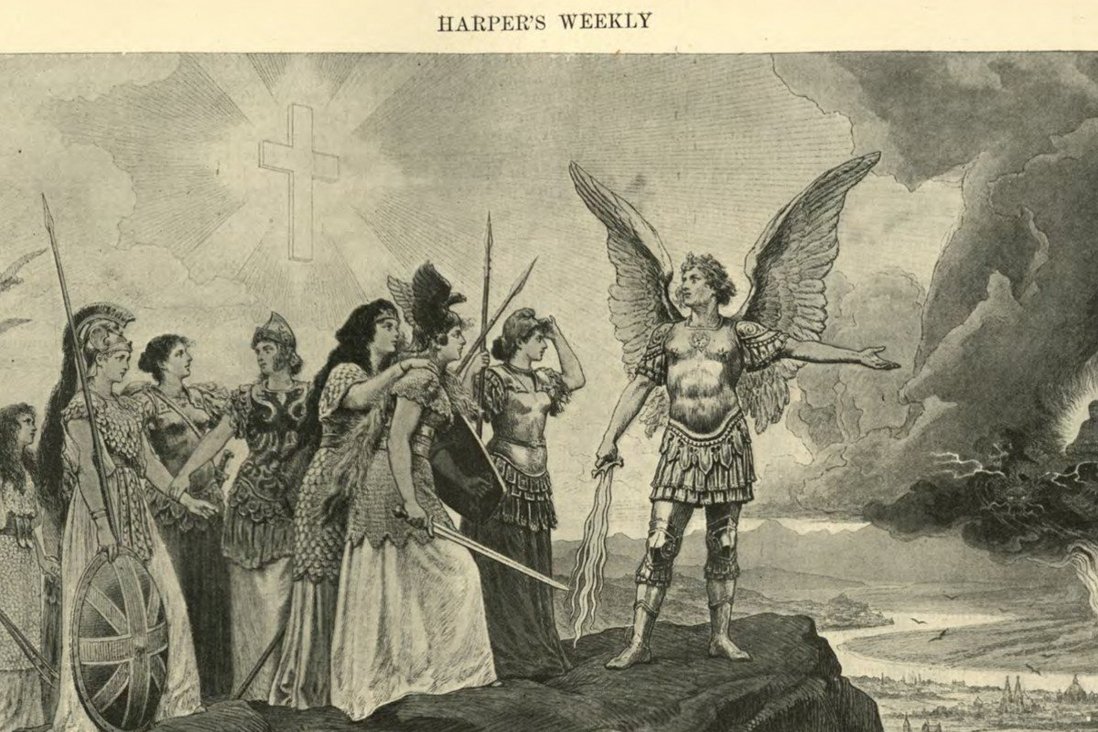
Image of the “Yellow Peril” from South China Morning Post
- 1907: Anti-Japanese hate escalates
- Japanese Americans formed communities, with language newspapers, economic associations with a rotating credit system, and farming cooperatives.
- However, the Japanese were prohibited from many public and private places, such as stores, theaters, swimming pools, and other venues.
- For example, in Vancouver hundreds of white rioters threw stones and broke windows in homes and stores in a Japanese neighborhood. They set the Japanese school aflame and drove thousands from their homes.
- President Theodore Roosevelt signed an executive order banning aliens from entering the continental US via its territories, like Hawaii.
- Japanese Americans formed communities, with language newspapers, economic associations with a rotating credit system, and farming cooperatives.
- 1908: The US negotiated with Japan to restrict Japanese immigration.
- 1924: The 1924 Immigration Act was a result of decades of nativist activism to “stem the tide” of undesirable foreigners of all races, but by excluding “aliens ineligible to citizenship” it applied to all Asians. The Japanese were no longer welcome.
Korean immigrants
- Korean immigrants shared many of the same challenges that Chinese and Japanese faced while working and living in Hawaii and the continental US.
- 1900s: Japan colonized Korea, Koreans chafed under Japanese rule, and the cause of Korean independence became central to their lives.
- The Japanese colonization of Korea turned Koreans abroad into stateless exiles.
- Korean immigrant communities helped sustain the Korean independence movement.
South Asian Immigrants
- Early 1900s: 8,055 South Asian immigrants were admitted into the US and faced virulent anti-Asian racism.
- South Asians found that because there were fewer of them, there were not as many formal organizations to provide aid, and because they were colonial subjects, their home government could not provide any assistance.
- They were prohibited from owning and leasing land, and weren’t eligible for naturalized US citizenship. They were barred from many professions and offered lower wages than white workers.
- 1907: In the state of Washington, a thousand union supporters marched, shouting: “Drive out the Hindus,” and a mob of white men dragged South Asians to the city jail.
- 1917: Legislation excluded South Asians from the US.
Filipinos
- 1898: US colonial rule in the Philippines began, and Filipinos were classified as US nationals, not foreign immigrants.
- Early 1900s: 150,000 Filipinos went to Hawaii and the continental US. There was rampant prejudice that focused on Filipinos’ colonized status and their “backwardness.”
- Landlords would not rent apartments, employers would not hire, and restaurants and barber shops refused to serve.
- 1929: A mob of 400 white men attacked a Filipino dance hall after a newspaper published a photograph of a Filipino man and white teenage girl embracing.
- 1930: 56,000 Filipinos in the US.
- White youths bombed the Stockton Filipino Federation of America building.
- 1934: As Congress debated excluding Filipinos from the continental US, the Philippine delegation pointed out that the US would be the only country to ban its own subjects from entering the motherland, which could jeopardize US interests.
- FDR signed the Philippine Independence Act, which promised the Philippines independence after 10 years, in exchange for downgrading the Filipino status from US nationals to aliens.
Japanese Americans during WWII
- 1941: 125,000 Japanese Americans lived in the continental US.
- After Pearl Harbor, Japanese Americans, ⅔ of them US citizens, were forced out of their homes and into desert exile, camps behind barbed wire, and former animal stalls, out of “military necessity.”
- Two US government reports found that the vast majority of Japanese Americans were overwhelmingly loyal to the US.
- The US Treasury froze Japanese American assets and seized $27.5 million in Japanese businesses and real estate.
- Secretary of the Navy Frank Knox told reporters that the attack was “the most effective [Japanese American] Fifth Column work of the entire war.” He lacked evidence, but nonetheless repeated this to President Franklin D. Roosevelt. These false claims from a high-ranking official had extensive consequences.
- American public support for the mass internment of Japanese Americans grew nationwide.
- 1942: FDR signed Executive Order 9066 for mass internment, ignoring multiple reports stating that this was unnecessary.
- 12 Latin American countries deported Axis nationals to the US.
- 1944: Fred Korematsu refused to comply with EO 9066.
- He was arrested and sent to prison. The American Civil Liberties Union offered to help him sue in order to test the order’s constitutionality.
- The majority opinion, written by former KKK member Justice Hugo Black, upheld the constitutionality of the incarceration of Japanese Americans.
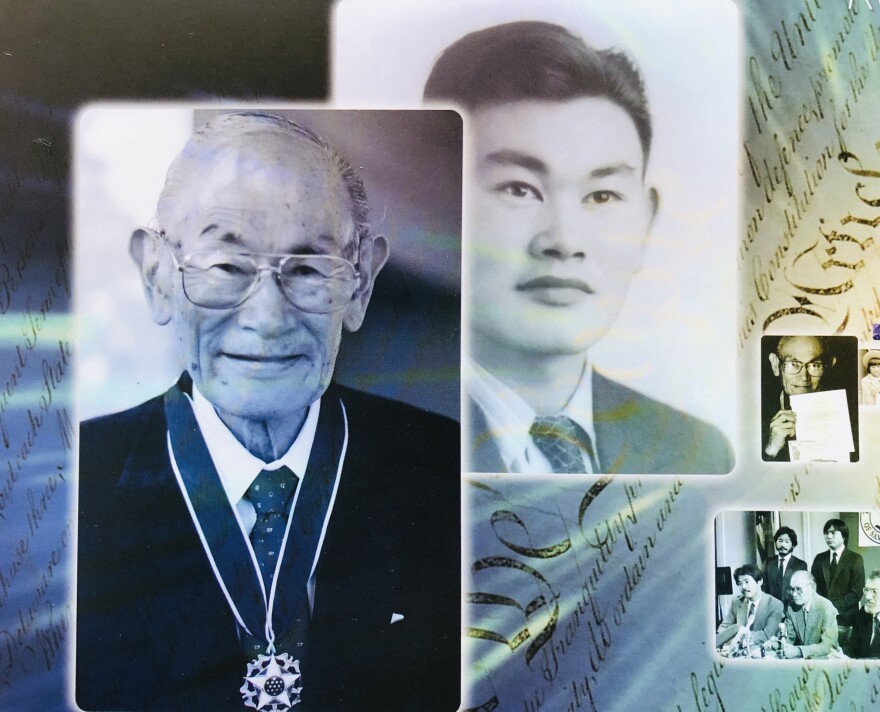
Image of Korematsu from www.wyso.org
- German and Italian Americans were not incarcerated.
- Despite all this, many Japanese Americans volunteered to serve in the army.
- After the war, formerly interned Japanese Americans were dispersed. While the government wanted them to integrate into society, many white neighborhoods were off-limits to nonwhites due to exclusionary practices enforced by real estate agents and residents.
Southeast Asians in the US
- 1950s: The US’s anticommunist foreign policy led it to Southeast Asia.
- The US intervened in the domestic affairs of Laos and Cambodia.
- US bombings contributed to their political destablizations, and by 1975 both were under communist rule.
- The US intervened in the domestic affairs of Laos and Cambodia.
- 1954: Geneva Accords divided Vietnam along the 17th parallel.
- The North was led by Ho Chi Minh’s Viet Minh government.
- The US created a new government in South Vietnam led by Ngo Dinh Diem.
- 1964:
- When North Vietnamese ships fired on a US destroyer in 1964, President Lyndon B. Johnson declared it an act of unprovoked communist aggression. Congress allowed him to bomb North Vietnam and deploy troops to South Vietnam.
- The US wanted more active military intervention in Laos, but the Geneva Accords prohibited it. Thus, the CIA recruited nearly 40,000 Hmong soldiers.
- From 1964 to 1973, the US dropped more than 2 million tons of ordnance in Laos, “the most intensely bombarded place on the face of the planet.”
- 1965: US combat troops begin arriving in Vietnam in large numbers.
- 1968: There were 540,000 US troops in Vietnam.
- The total tonnage dropped on Vietnam, Laos, and Cambodia surpassed what had been dropped on Nazi Germany and Nazi-occupied countries.
- The US also dropped napalm (a flammable gel), chemical defoliants, and herbicides to clear trees and increase visibility for US forces. This devastated the local environment.
- 12 million South Vietnamese, ½ the country’s total population, were forced to leave their homes and were internally displaced.
- The total tonnage dropped on Vietnam, Laos, and Cambodia surpassed what had been dropped on Nazi Germany and Nazi-occupied countries.
- 1969: President Nixon authorized the launch of 108,823 tons of bombs on neutral Cambodia, but hid it from the American public.
- This caused more civilian deaths than military deaths, estimated from 50,000 to 150,000 (as a comparison, almost 50,000 Americans died in the Vietnam War).
- 1970: One in four Laotians (more than 600,000) had been displaced.
- The US claimed that the American presence in Laos was solely humanitarian.
- 1975: Chaos erupted as people, including the last Americans left in the country, scrambled to escape as the South Vietnamese government fell.
- President Ford established a task force to coordinate refugee evacuation.
- Almost 433,000 refugees from Vietnam, Cambodia, and Laos arrived in the US.

Image of the Vietnam War from the New York Times
Hmong Refugees and Hmong Americans
- 1970s: More than 250,000 Hmong from Laos arrived in the US.
- The US dispersed refugees, so the first arrivals had few support networks.
- Many knew little English, had no nonagricultural skills, and no job training.
- As a result, Hmong refugees had high rates of unemployment, poverty, and dependency on government assistance.
- Instead of describing Hmong refugees as war veterans who had earned political asylum, the media portrayed them as primitives who couldn’t survive in the modern world.
- Despite regulations that offered refugees the same assistance as others in the same income bracket, many complained that they received more financial assistance and other benefits.
- Hate crimes spiked. For example, people threw Molotov cocktails into Hmong homes, while bumper stickers reading “Save a Deer. Shoot a Mung.” appeared.
Cold War
- During WWII, racism in the US was increasingly seen as damaging its fight against the Axis powers, and many Asian exclusion laws were abolished.
- During the Cold War, Soviet propaganda highlighted the US’s racial discrimination to tarnish America’s image; thus, the US focused on ending racial inequality.
“The Rise of Asian Americans”
- 1965: The Immigration and Nationality Act opened the door for new Asian immigrants.
- The law created preferences for family reunification and professional skills.
- This helped many Asian immigrants who already had a high educational status and likely a work visa for a high-paying job.
- “Model minority”: With its roots in WWII and the Cold War, this stereotype became more popular during the 1980s as the media praised Asian Americans for their successes.
- This stereotype was and still is used to compare them to other racial minorities.
- For instance, African American poverty is often viewed as the result of a dysfunctional culture, rather than a byproduct of the disappearance of blue-collar jobs, deteriorating public schools, and institutionalized discrimination.
- There is also the concern that Asian American success hurts white Americans.
- The law created preferences for family reunification and professional skills.
- Highlighting only the successes conceals the vast swaths of Asian Americans who live in poverty, are unemployed, and have low rates of education.
- US Census data confirm that Asian Americans are over-represented at both ends of the educational and socioeconomic spectrum.
- More Asian Americans (49%) have college degrees compared with all other US adults (28%).
- A greater proportion of the Asian American population (8%) have less than a 9th grade education than the total US population (6%).
- Chinese Americans have higher median earnings than the general population, but 14% of Chinese Americans live in poverty, higher than the rate for the general population.
- US Census data confirm that Asian Americans are over-represented at both ends of the educational and socioeconomic spectrum.
- This stereotype expects Asian Americans to tolerate contemporary forms of racism, allows Americans to turn a blind eye to enduring inequalities, and unquestioning Asian Americans may become complicit by accepting ongoing inequality.
- 1980s: People began to commit more hate crimes against Asian Americans, in part because so many automotive jobs went to Japan.
- In 1982, Vincent Chin, a Chinese American engineer, was beaten to death by Ronald Ebens and Michael Nitz, former autoworkers.
- WItnesses said that Ebens called him a “Jap” and yelled: “It’s because of you motherfuckers that we’re out of work!”
- Ebens and Nitz were sentenced to probation and a fine, no jail.
- The Chinese American community organized, and was joined by Japanese, Korean, Filipino, and African Americans in one of the first large-scale interracial campaigns.
- In 1982, Vincent Chin, a Chinese American engineer, was beaten to death by Ronald Ebens and Michael Nitz, former autoworkers.
- For South Asians, the 9/11 terrorist attacks ushered in a wave of racial profiling, heightened government scrutiny, and hate crimes.
- Mass deportations occurred, often with little or no public awareness.
- After 9/11, hate crimes directed against Muslim, Middle Eastern, and South Asian Americans increased by 1,600%.
- For instance, Balbir Sodhi, a Arizonian Sikh gas station owner, was killed by a self-proclaimed “patriot” who blamed him for the terrorist attacks.
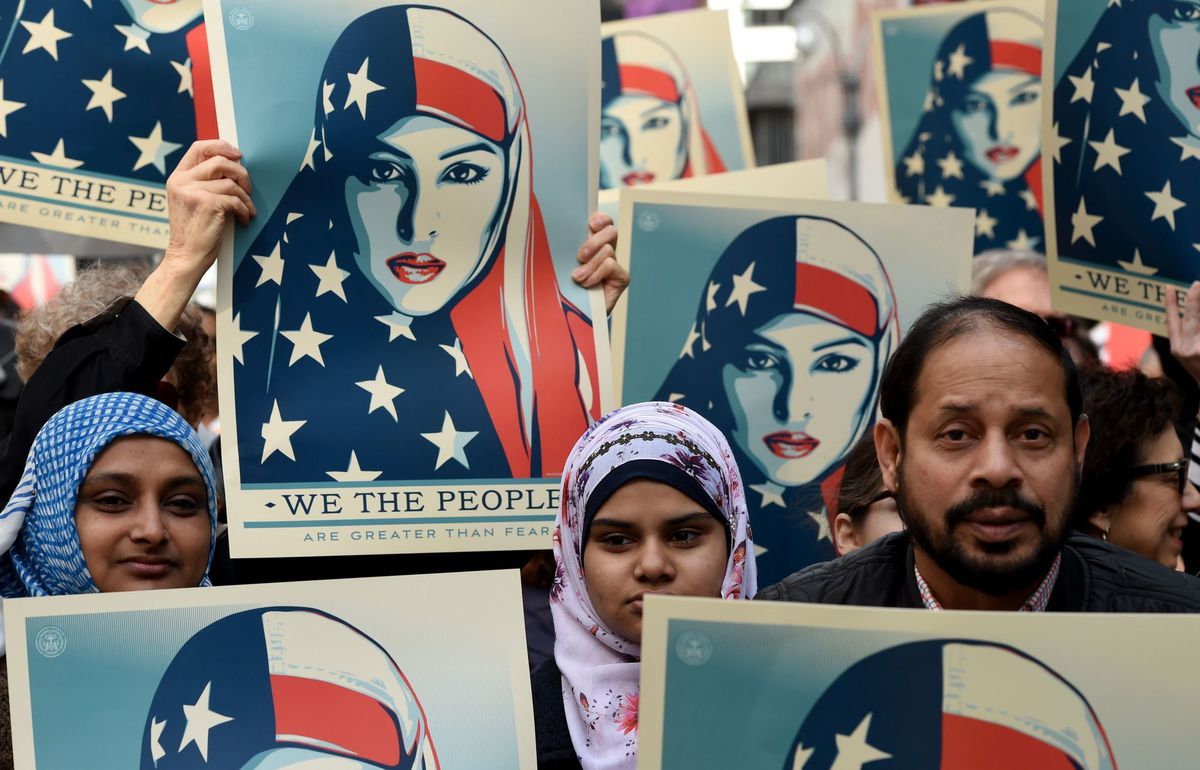
Image of Muslim Americans from the Chicago Tribune
- Asian Americans have become increasingly involved in civil rights, women’s liberation, and LGBTQ+ activism.
And More, Including:
- A significant chapter about how Asians became the first undocumented immigrants
- Details about British involvement in China, including the Opium Wars
- The causes of massive migration in Southern China in the 1800s
- How Korean immigrants faced a unique struggle because of their statelessness
- The Cold War and its complex effect on US race relations
- How the US government persuaded Latin American governments to incarcerate their Japanese residents
